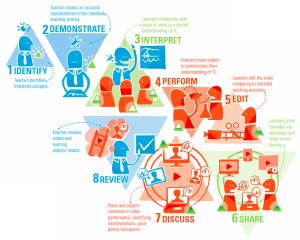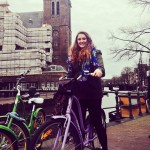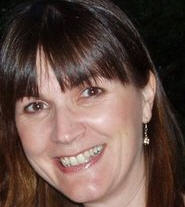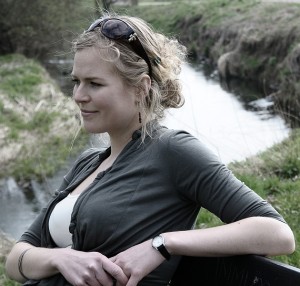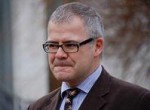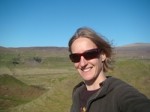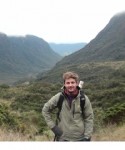Blogging is something slightly alien to me, especially in an academic sense. As an Open University intern it is part of my role to blog about what I’m doing and quite simply, it seems that the activities I'm currently a part of are just too interesting to keep from you all! ...continue reading
Tag Archives: engaging with school students
Imagining scientists – having fun, out on the street, tracking criminals and fighting zombies!
Can you imagine a scientist? Alternatively, can you imagine yourself working as a scientist? These are questions that Liz Whitelegg, Richard Holliman and myself, all members of the Invisible Witnesses team, have been asking school students.
...continue reading
Evaluating ways of capturing engagement processes
Project Team: Gill Clough, Eliz Hartnett, Andrew Brasher, Canan Blake, Anne Adams
We are really excited to have been selected for seed funding from the Evidencing Engaged Research call. This project builds on and extends the work we are doing on the JuxtaLearn Project which aims to engage students with science and technology through creative video performance (see our earlier post).
Engaging research and the ‘Our Story App’
I recently won one the the OU's first ever Engaging Research Awards. When I heard about the engaging research awards, I thought ‘hmn...How can there be an award for something which ought to be integral to any good piece of research? Isn’t engagement with publics the defining characteristic underlying all research endeavours? And how can one judge a piece of research to be more engaged than another?’
The more I thought about it, the more I realised how engagement with publics has been an underlying principle of the Our Story project. The story-making tablet/smartphone app (called “Our Story”) was developed in parallel with my PhD research and has led to a number of projects integral to my doctoral work but also expanding it to other areas, research institutions and publics.
A shared purpose for engaging research
Leadership; Mission; Communication
Champion’s blog; star date 2014.03.10 (in effect, an update on the first post on this blog, 'An open research university').
Nearly two years of the mission completed; 14 months of funding left. "Where do we boldly go from here?"
I was interviewed late last year by Lucian Hudson, the OU's Director of Communications, to explore this question. We also discussed progress with the core mission of the OU's Public Engagement with Research Catalyst.
You can see the results of our discussion in the video below. If you'd prefer to read the text of the interview, select transcript.
Plan for diversity and inclusion

Teamwork is key to successful planning
When we're producing courses at the Open University we tend to work in teams; many of them are multi-discplinary and almost all of them combine academics with other forms of professional expertise (e.g. editors and media professionals). For example, the last course I chaired (with the catchy code, SH804) involved more than 70 people during the production phase (including academics, media professionals, editors, librarians and web developers).
Over the years I've been lucky enough to work with some excellent colleagues in various course teams. You might expect me to say that. But it's not always straightforward working as a social scientist in a Faculty of Science. One of the many colleagues I've really valued working with is Professor Simon Kelley. We worked together as part of a larger course team on Science in Context.
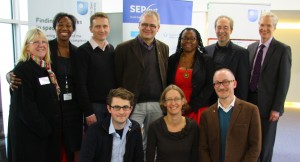
Serendipity meets planning for diversity and inclusion
Spin forwards several years: I'd been working on the Engaging Opportunities project for about nine months when we began to think seriously about organising the first of the three annual lectures that we'd promised RCUK we would deliver.
A conversation with Simon Kelley at the regular departmental coffee morning led to a collaboration with colleagues from the Denbigh Teaching School Alliance, Centre for Physical and Environmental Sciences (CEPSAR), eSTEeM, the OU's AV team and our Research, Scholarship and Quality Unit.
...continue reading
Exoplanets and how to find them
I’m an astrophysicist and my research is mainly concerned with what may be called the “time domain universe”, or simply: stars whose brightness varies with time.
Stars can have a variable brightness for one of several reasons: they might be intrinsically variable due to pulsations of the star’s atmosphere; they might be in orbit with another object that periodically passes in front of it; or they might suffer some form of catastrophic change that causes flaring or outburst behaviour, for instance.
One way to carry out research in time domain astrophysics is simply to monitor the brightness of all the stars in the sky and see what you find. This is, in effect, what is done by the WASP (Wide Angle Search for Planets) project, of which I and others at the Open University are part.
Sweat, mud and leeches
A day in the life of a field geologist
Earth Scientists like me study the Earth: how it formed, how it changed over geological time, and how all the different ‘bits’ such as the atmosphere, oceans, soil and rocks interact with each other.
In detail, I’m a geologist – I specifically try to understand the rocks beneath our feet. And in even more detail, I’m a field geologist. Nothing excites me more than the prospect of getting to spend weeks in a tent up a remote mountain somewhere (although preferably not in the rain), collecting rock samples for analysis back in the lab.
The past is the key to the future
I am a palaeoecologist at the Open University. My research involves reconstructing how our planet has changed over longer time scales in the past (1-2 million years). At first glance my research does not seem entirely relevant to current climate change but in fact it is integral. The climate system is hugely complicated and we still don’t fully understand how all the aspects work or how they interact together. One way of learning how the system operates is to simply observe it. The longer you observe it; then the better you will understand how it works and what are the possibilities for how it may change.
JuxtaLearn – engaging students with science and technology through creative video performance
JuxtaLearn is a 3-year EU-funded project that has just passed the one-year mark and we are currently working to implement the technical aspects of the JuxtaLearn Process that we have developed.
In our presentation we give a little more detail about the challenges and findings from our first year. We showcase some of the videos made by the partners in the project to express their vision. One of these, the Teddy video, describes our efforts to come to a shared understanding of the project between the partners on the project, as well as introducing the workshops we held with teachers in school.
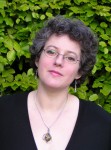
The goal of the JuxtaLearn Project is to enable students to overcome barriers to science and technology learning by exploring and sharing their understanding using creative video performance. By engaging student curiosity in difficult-to-learn science and technology subjects, the JuxtaLearn Process supports them along a creative route to a deeper understanding of topics that the teachers have identified as particularly problematic. The JuxtaLearn Process is illustrated, graphically, in Figure 1.
